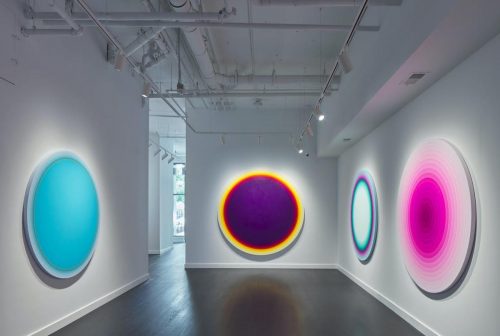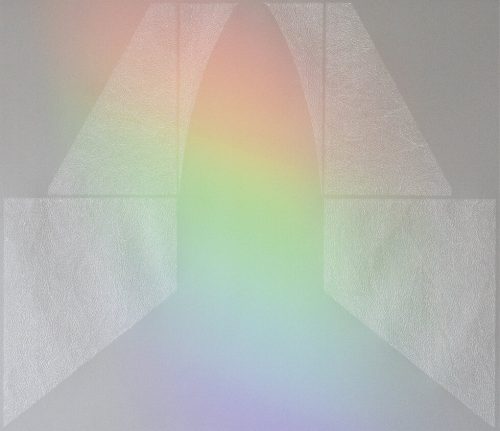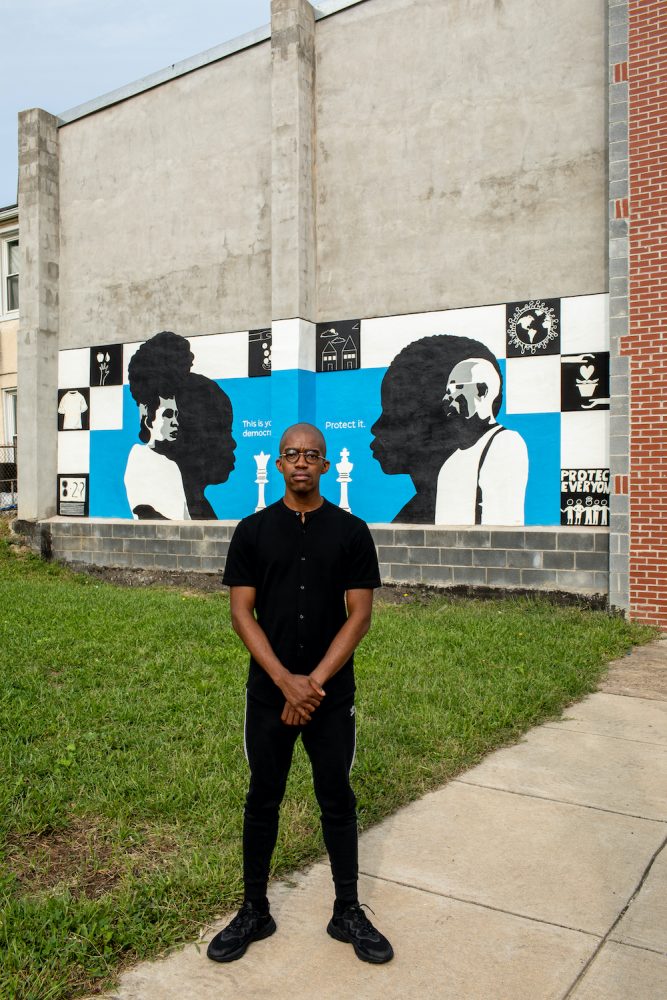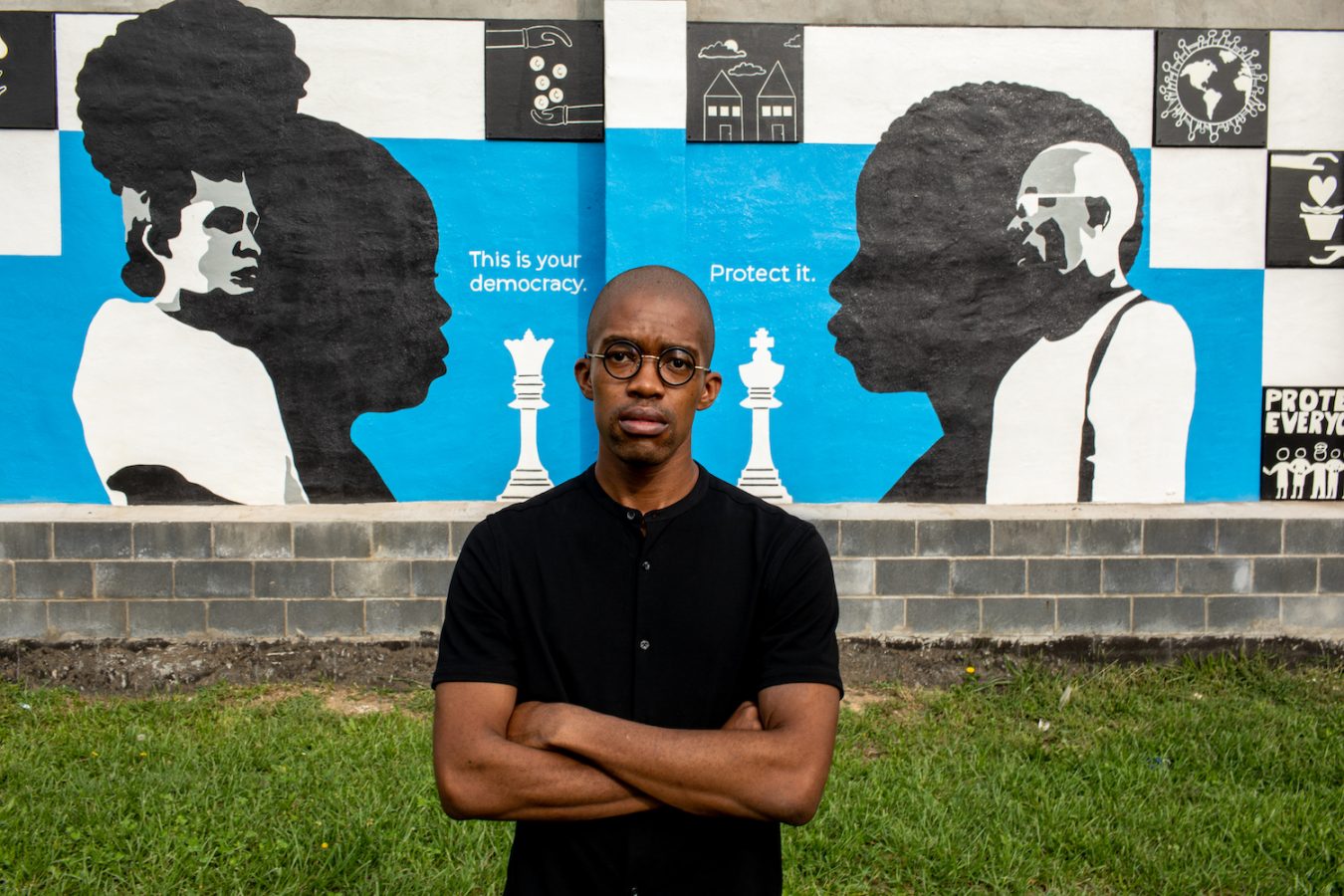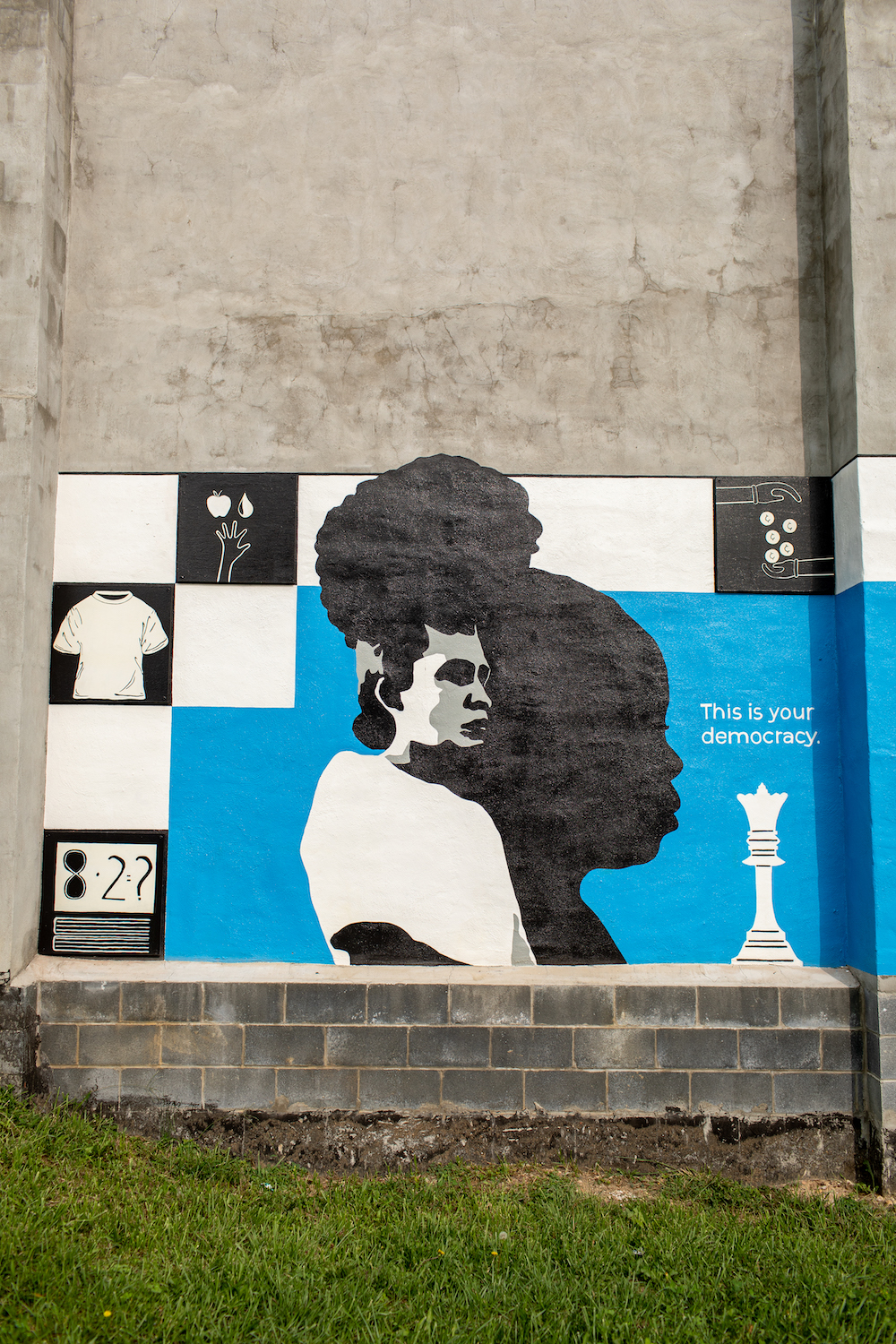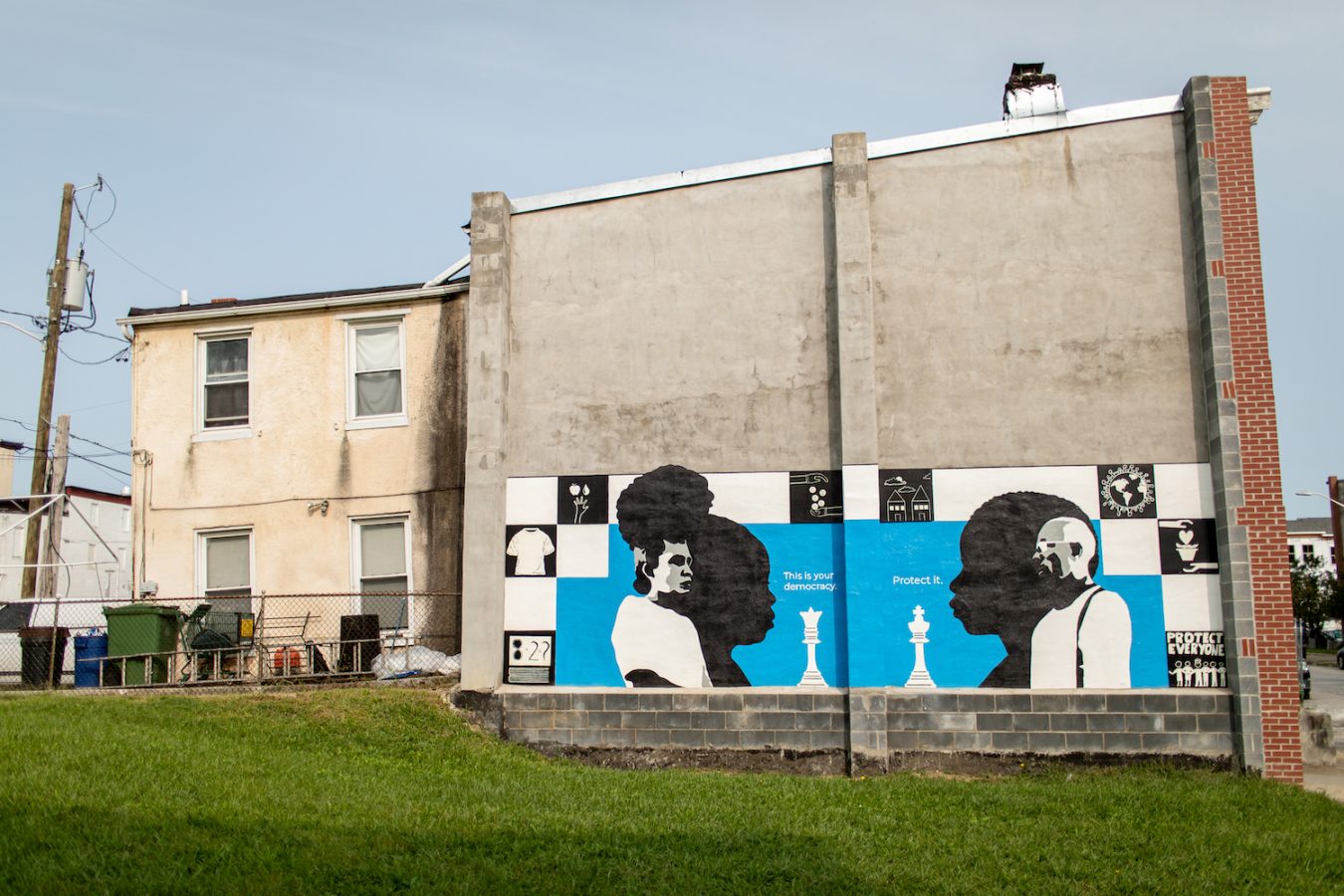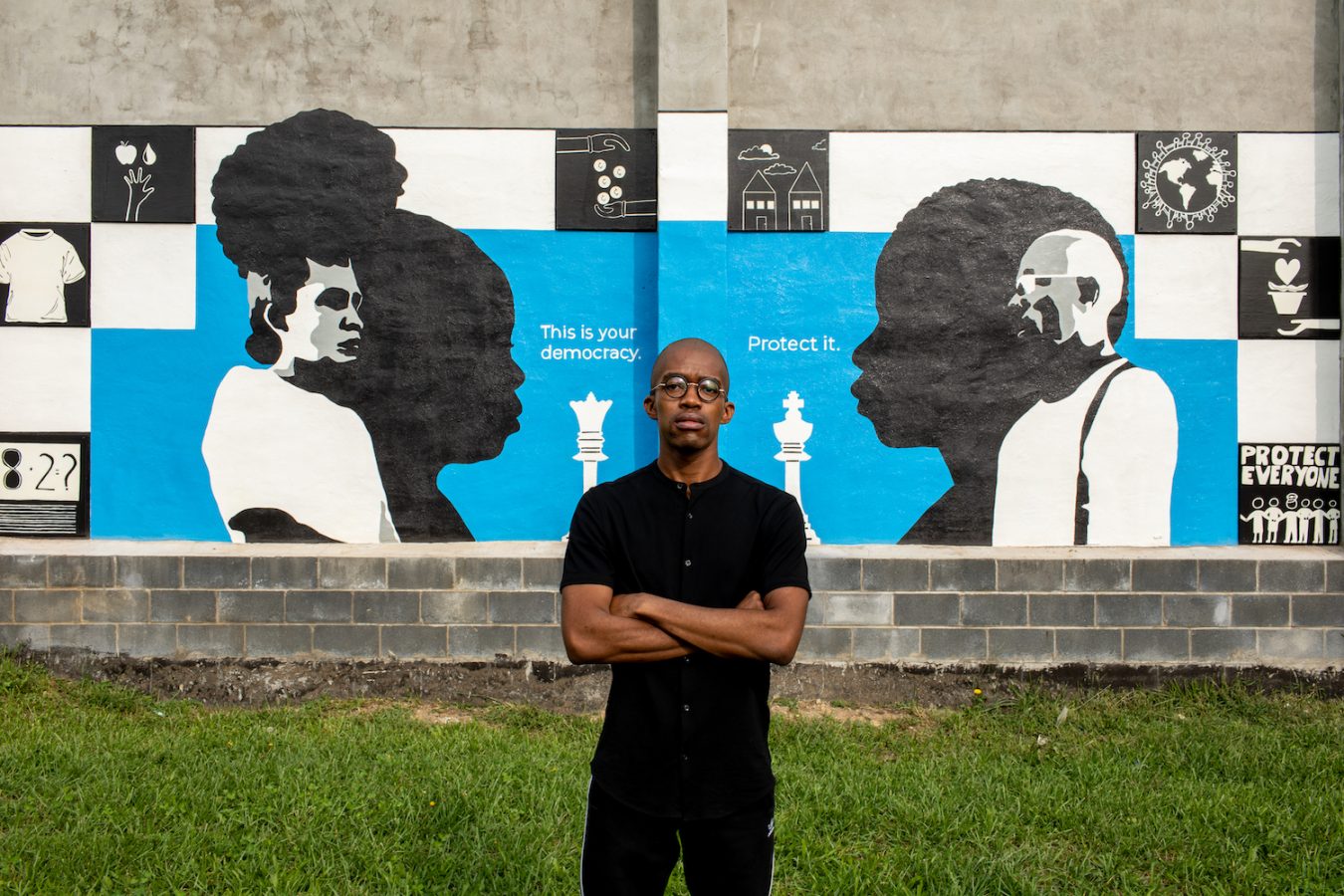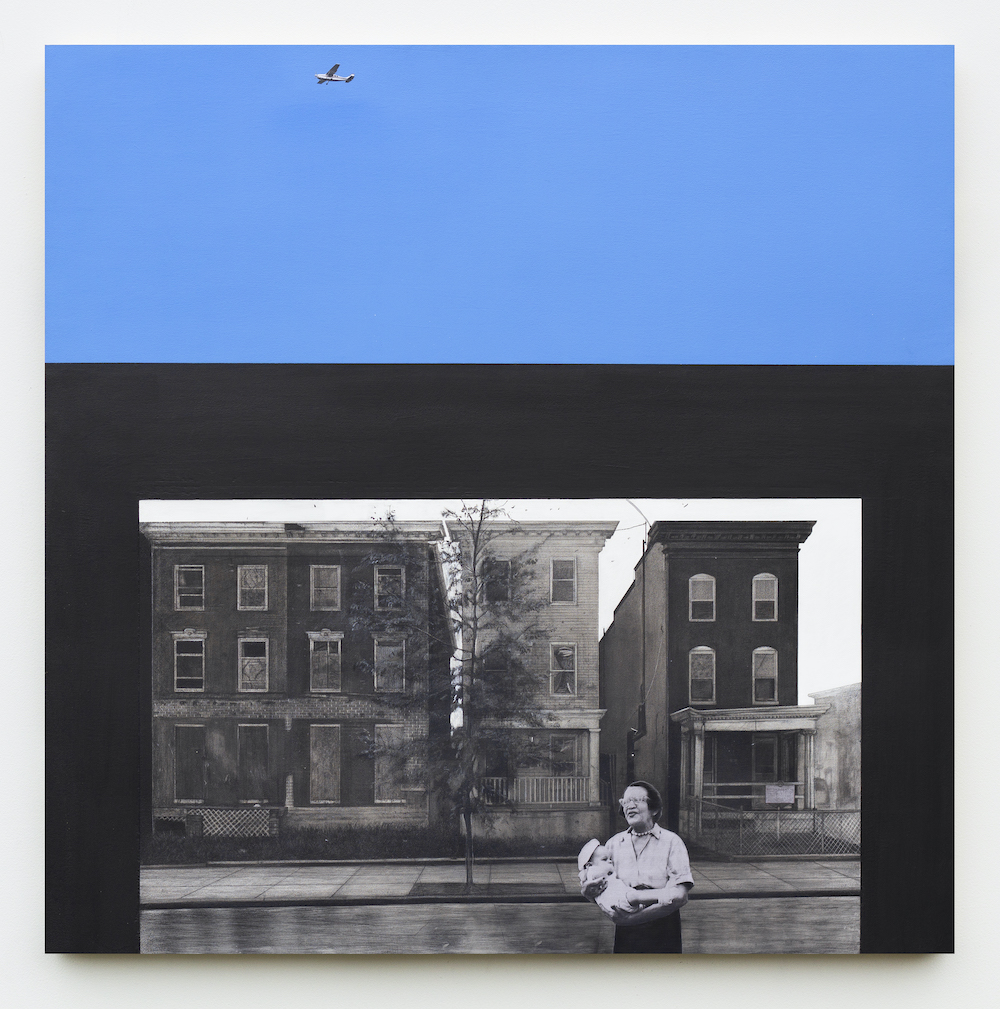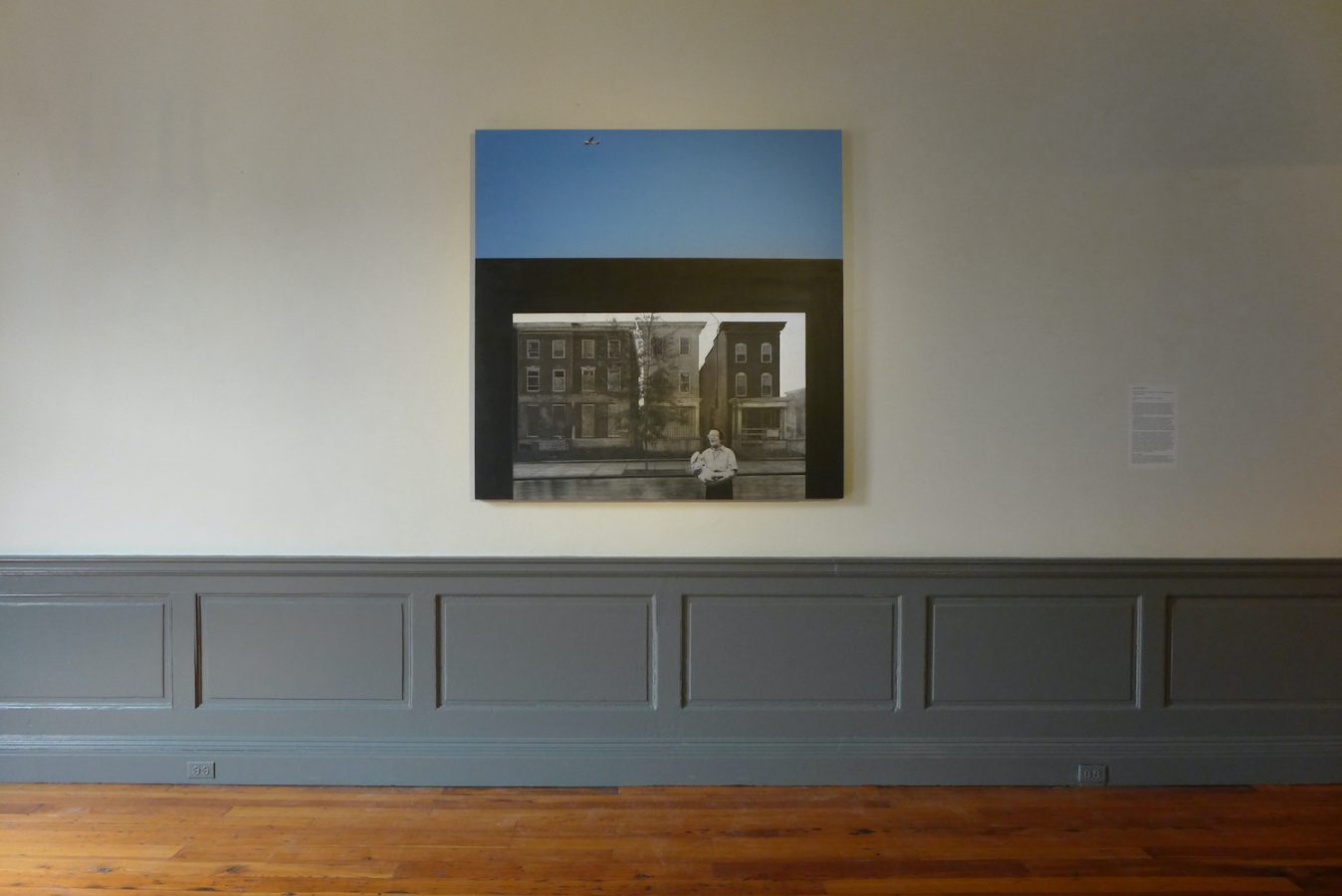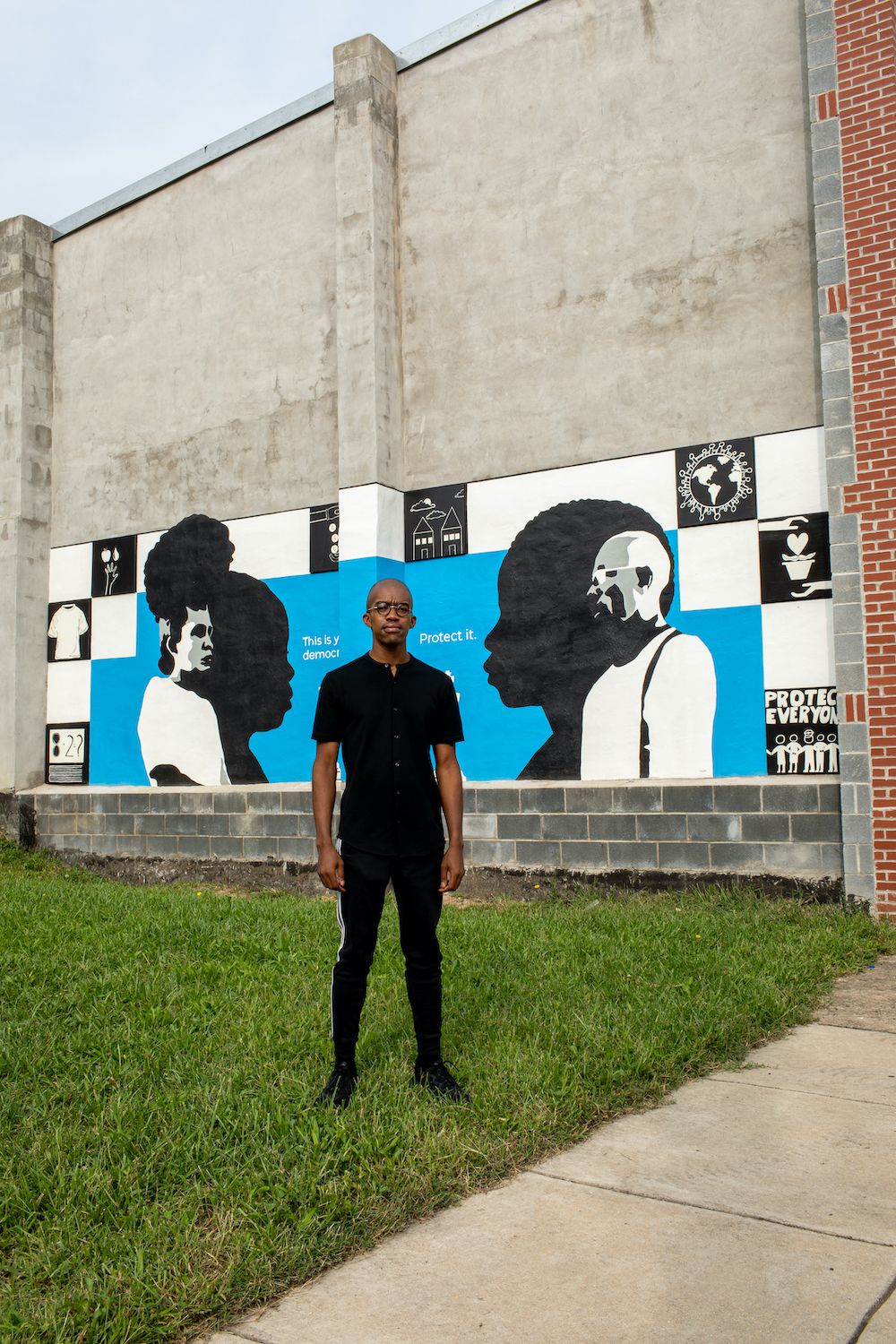McKinley Wallace III isn’t a practicing Jehovah’s Witness, but he has played one in a simulation. He has also played a person whose mental health is in danger, a possibly negligent father, and a trauma survivor, among other roles. The mixed-media artist and educator loves having difficult conversations, so working part-time for Johns Hopkins in their Standardized Patient care program has been a chance to try on different life stories in the name of helping doctors improve their bedside manner. Wallace took the job four years ago to have an outlet to practice his acting, a passion he discovered as an undergraduate at MICA.
As strange as it might sound, it has also become a way for Wallace to help, and helping others is an obvious core value of his. In this job, he is giving life to scenarios in which medical professionals can improve their ability “to interject, but not in a forceful way,” he explains, and instead practice imparting important medical information plainly and without judgment. “I like those moments and I’ve gotten used to tension in that way,” Wallace says, “whether it’s being improvised or you can expect it.”
Wallace doesn’t avoid difficult topics in his artwork either, making large-scale drawings and smaller collages that may challenge his viewer’s ideas about race and Baltimore neighborhoods both familiar and less so. His large-scale drawings are mostly black, white, and blue pieces that contrast highly rendered drawn elements of architecture and people with large swaths of pure blue color, which typically read as skies. Combining archival reference photos with his own contemporary photography, Wallace is able to flatten time in his work about Baltimore City.
About the influence that Abstract Expressionists and Washington Color School painters have had on this body of work, Wallace says, “I am thinking about the emotional connection you get in a subconscious way [based on the specific color] I’m using… I think there’s discipline in hard-edge work and in color fields where I really do think of the blue as something I don’t really want to interrupt too much.” Wallace hopes his viewer will be taken in by the scale of the works so they will be “hit with the work all at the same time,” which requires him to plan out how he wants to selectively simplify his source photographs and then install the pieces high so they overwhelm the viewer, who must look up at them.
